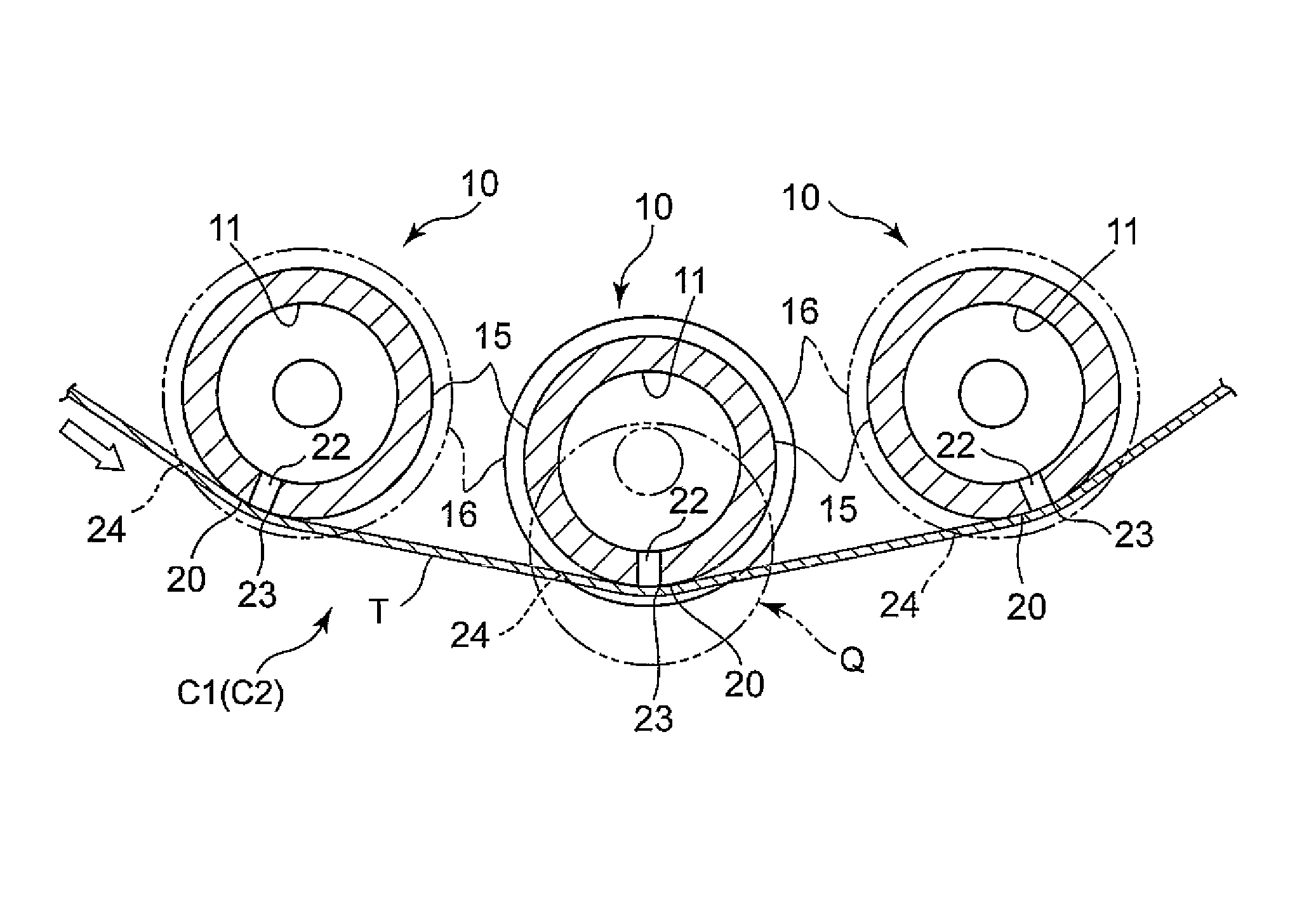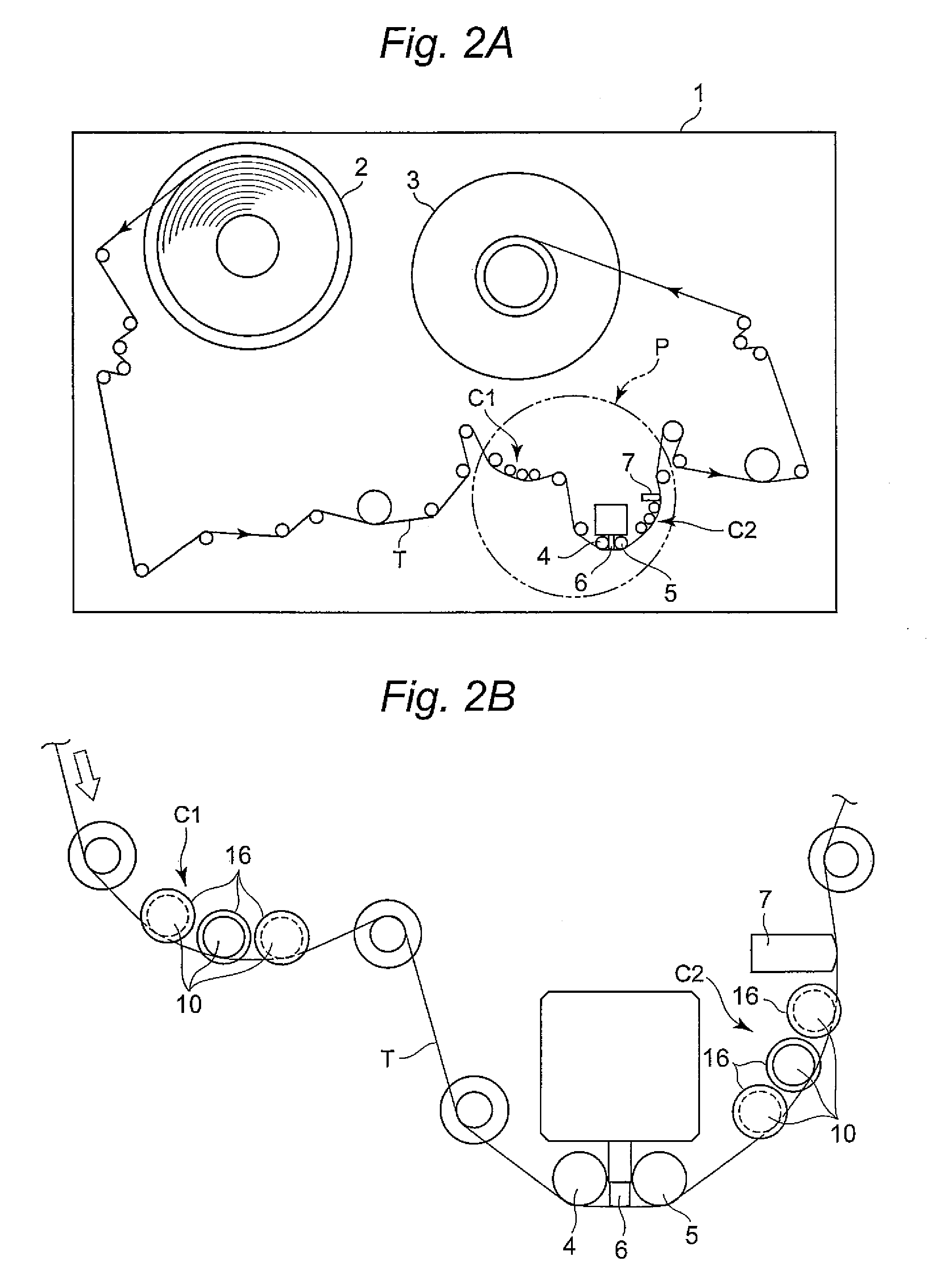Tape device having a tape cleaning structure
a cleaning structure and tape drive technology, applied in the field of tape drives, can solve the problems of inability to easily obtain a sufficient cleaning effect, inability to produce advanced cleaning effects, limitations, and conventional cleaning structures to achieve advanced cleaning effects, eliminate read errors, and high clean state
- Summary
- Abstract
- Description
- Claims
- Application Information
AI Technical Summary
Benefits of technology
Problems solved by technology
Method used
Image
Examples
Embodiment Construction
[0054]Before the description of the present invention proceeds, it is to be noted that like parts are designated by like reference numerals throughout the accompanying drawings.
[0055]Hereinbelow, embodiments of the invention will be described in detail with reference to the drawings.
[0056]FIGS. 1, 2A, 2B, 3A and 3B are views showing an embodiment in which the tape device of the present invention is applied to a servo writer. As shown in FIGS. 2A and 2B, the servo writer has an unwinding reel 2 and a takeup reel 3 on the right-hand and left-hand sides of the front surface of its machine body 1. The servo writer is constructed so that a magnetic tape (sometimes referred to simply as a “tape”) T unwound from the unwinding reel 2 can be fed to the takeup reel 3 while being guided during running by a plurality of groups of tape guides. That is, the tape T runs along the plurality of tape guides arranged on the running path of the tape T with the unwinding reel 2 served as a commencing en...
PUM
| Property | Measurement | Unit |
|---|---|---|
| width | aaaaa | aaaaa |
| recording wavelength | aaaaa | aaaaa |
| vacuum pressure | aaaaa | aaaaa |
Abstract
Description
Claims
Application Information
 Login to View More
Login to View More - R&D
- Intellectual Property
- Life Sciences
- Materials
- Tech Scout
- Unparalleled Data Quality
- Higher Quality Content
- 60% Fewer Hallucinations
Browse by: Latest US Patents, China's latest patents, Technical Efficacy Thesaurus, Application Domain, Technology Topic, Popular Technical Reports.
© 2025 PatSnap. All rights reserved.Legal|Privacy policy|Modern Slavery Act Transparency Statement|Sitemap|About US| Contact US: help@patsnap.com



